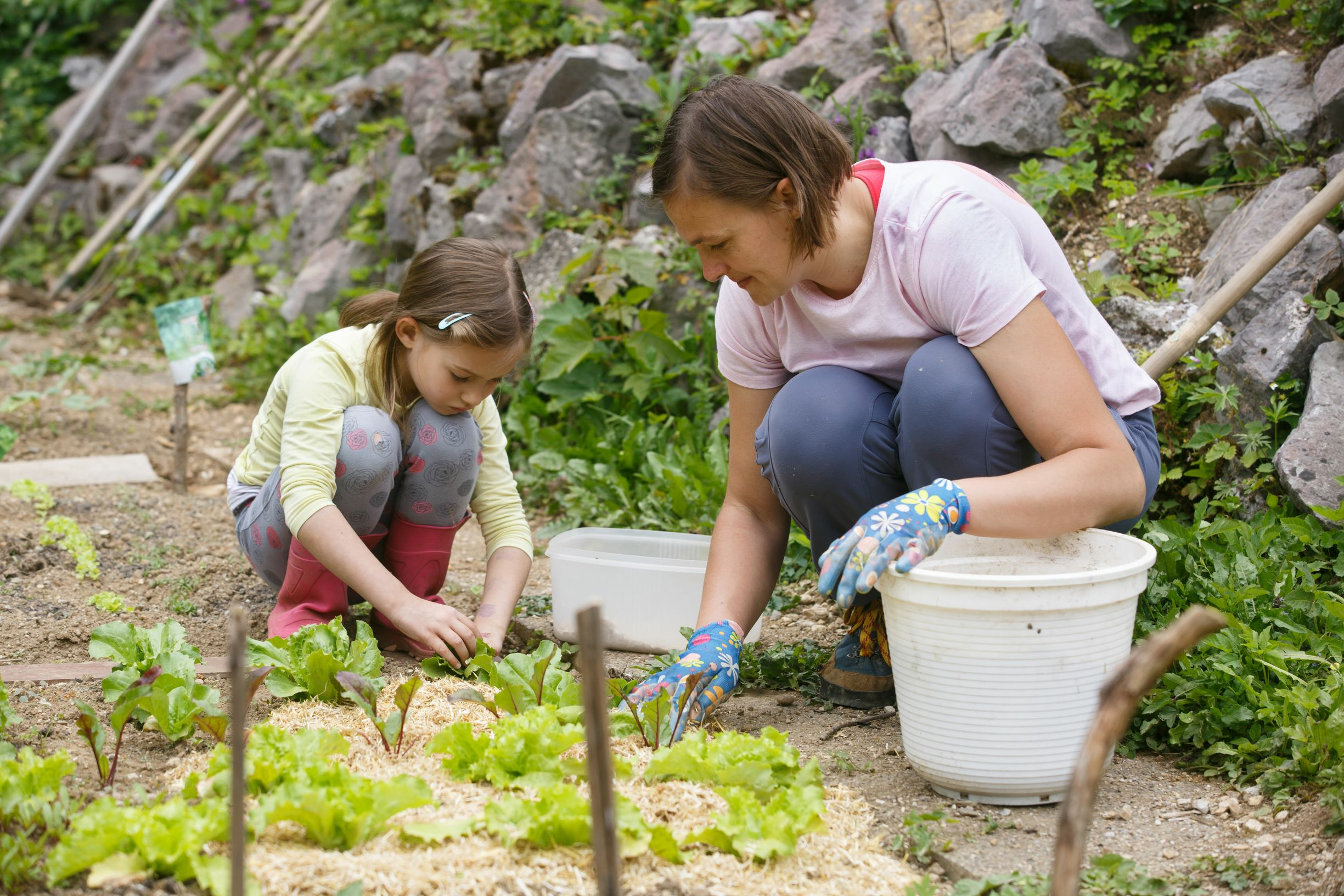
Gardening With Children: 10 Ideas for Simple Projects
Gardening is a great activity for young and old. We have therefore put together a few ideas for gardening with children. Of course, we've also thought of everyone who doesn't have a garden - there are also a few projects for the windowsill. After all, what could be more of a change from sitting around at school and in front of the TV than digging in the soil with your hands and watching something sprout, not to mention the educational value.
This Article Contains:
- Garden Projects With Children
- Garden Tools for Children
- Nature Projects With Children: The Right Way to Deal with Insects
- Vegetable Garden for the Garden or Balcony
- Gardening Ideas for Children: DIY Growing Pots
- Projects With Children Without a Garden or Balcony
- Frequently Asked Questions About Gardening With Children
Quick Overview
Garden Projects With Children
If you want to sow and plant with children, you should choose fast-growing vegetable plants for a quick harvest. Suitable for this are, for example:
- radishes
- sugar snap peas and beans
- salads
- nasturtium and cress
- spinach
Ideas for Nature Projects With Children Without a Garden or Balcony
- Growing microgreens: Microgreens can be eaten directly as seedlings a few days after sowing. Mustard, broccoli, radishes, rocket, clover, peas and sunflowers are suitable for this. A particularly nice idea for growing microgreens is the cress hedgehog.
- Regrowing vegetables: Some vegetables can regrow and sprout again as long as there are enough roots left. Spring onions, leeks, carrots, celery and lettuce are particularly suitable for regrowing.
- Make your ownseed bombs: Mix clay soil, potting soil together with the seeds and a little water.
Garden Projects With Children
In order to awaken a love and connection to gardening, it is first important to offer the child a suitable space for this. Nature or the garden should serve as a play area where there is always something new to discover. Animals and plants can be observed.
Where does what grow? What does a fruit taste like when it is ripe or unripe? What can you make from collected leaves or cones?
Fine motor skills and creativity can be strengthened by making plant pots or watering plants. The mind is also used and a connection to conscious handling of food and groceries is created. A sense of achievement is also important for children, which is why many children love harvesting so much. Berry bushes, radishes or sugar snap peas are therefore particularly suitable, as they can be harvested quickly and often. Carrots are also very popular, as you can't even see the ripe root until it is harvested. The surprise effect is all the more enjoyable.
Garden Tools for Children
Of course, normal gardening tools are still a bit big for small children's hands. That's why it's much more fun if the shovel and bucket are available in a suitable size. This gives young gardeners an early sense of responsibility and they can be proud of the work they have done. If the gardening tools are always brought back to one place and stored, this can also promote a sense of order. Suitable small gardening tools for children are:
- bucket
- shovel
- rake
- hoe
- watering can
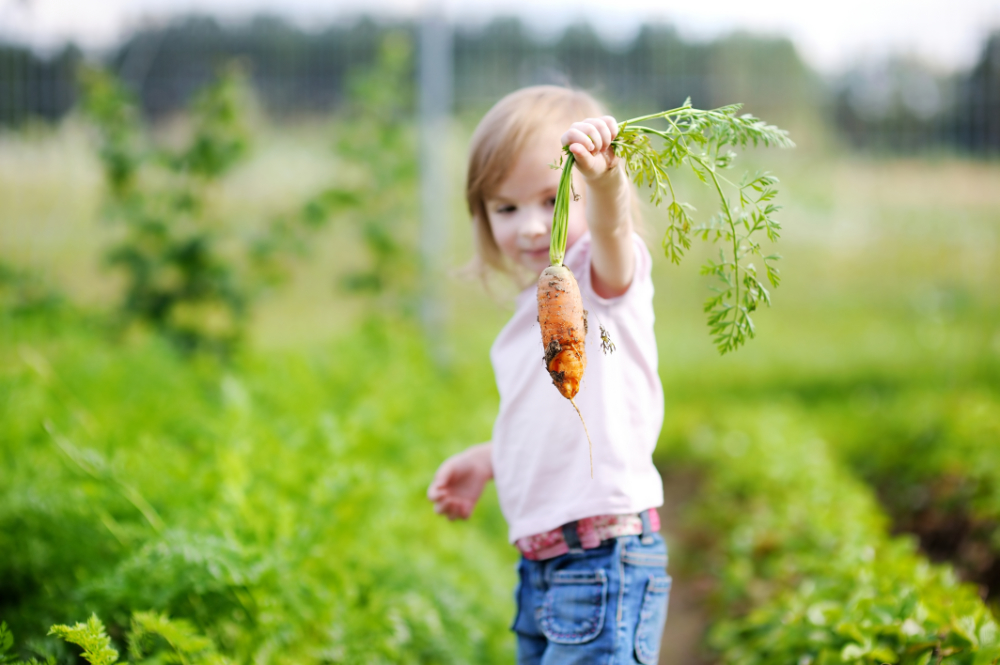
Nature Projects With Children: The Right Way to Deal with Insects
Gardening can teach children about the importance of insects for plants and therefore also for humans, as well as how to handle them correctly. Together with the children, insects such as bees, bumblebees and butterflies can be observed. The children see that the flowers are pollinated and fertilized by the insects. In this context, it is important to explain to the children that bees, bumblebees, wasps or hornets are useful, but should not be annoyed, as this can lead to painful experiences on both sides. Other animals, such as earthworms, are important as they loosen up the soil and thus contribute to the healthy growth of plants. Various herbs, but also ornamental plants, attract many insects. Together with the children, such wildflower strips, herbs or ornamental shrubs can be planted to provide enough food for the insects. Building an insect hotel is also fun and also attracts beneficial insects!
Vegetable Garden for the Garden or Balcony
Sowing and Harvesting Radishes With Children
Plants that ripen quickly are best for your first project, as you don't have to wait so long for the harvest. Radishes, which can be harvested after just 4 weeks, are particularly suitable. They are relatively undemanding and are forgiving even if they are not watered properly. The small tubers can also thrive in boxes on the balcony. Due to their size, the seeds are also easy to sow and the little plants do not need much space to grow. The red tubers also look attractive, are very healthy and taste delicious in a salad or on a sandwich.
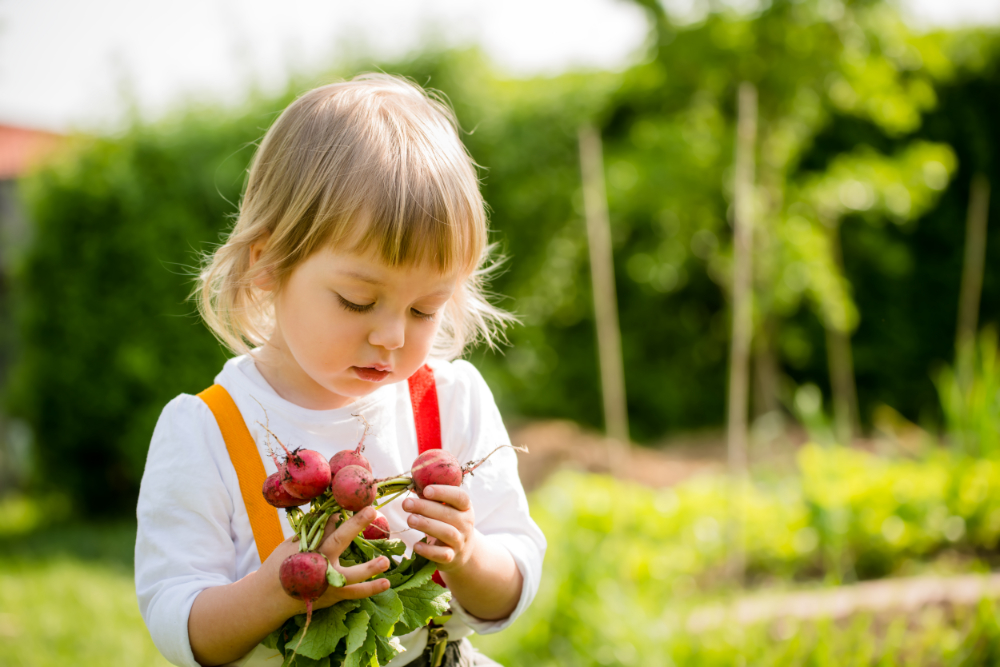
Growing Sweet Peas
The Sugar Snap Peas mentioned above are not only nice and sweet if you peel them straight from the pod, for example, but also germinate very quickly and therefore offer something to watch after just a few days. They are sown outdoors in mid-April and are not harvested until August. Sweet peas can be sown in containers on the balcony at the beginning of April and, depending on the location, can be harvested in early summer. However, peas can be grown indoors in small pots from mid-March and then planted outside from mid-April. Some varieties require a small climbing support, which can consist of a stick collected in the forest or garden, for example.
Planting Cocktail Tomatoes With Children
Cocktail tomatoes are also very popular garden classics and many children love to snack on the small red fruits. The seedlings can be grown indoors from the end of February to March. They can then be planted either in containers or in the garden in mid-May. Purchased young plants can also be planted outside from mid-May. A sheltered place is best for this, as the plants are susceptible to brown rot on their leaves from rain or watering. Waterlogging of the soil has the same effect. Tomatoes are a little more demanding overall, but with parental support, the little ones will certainly get the hang of it!
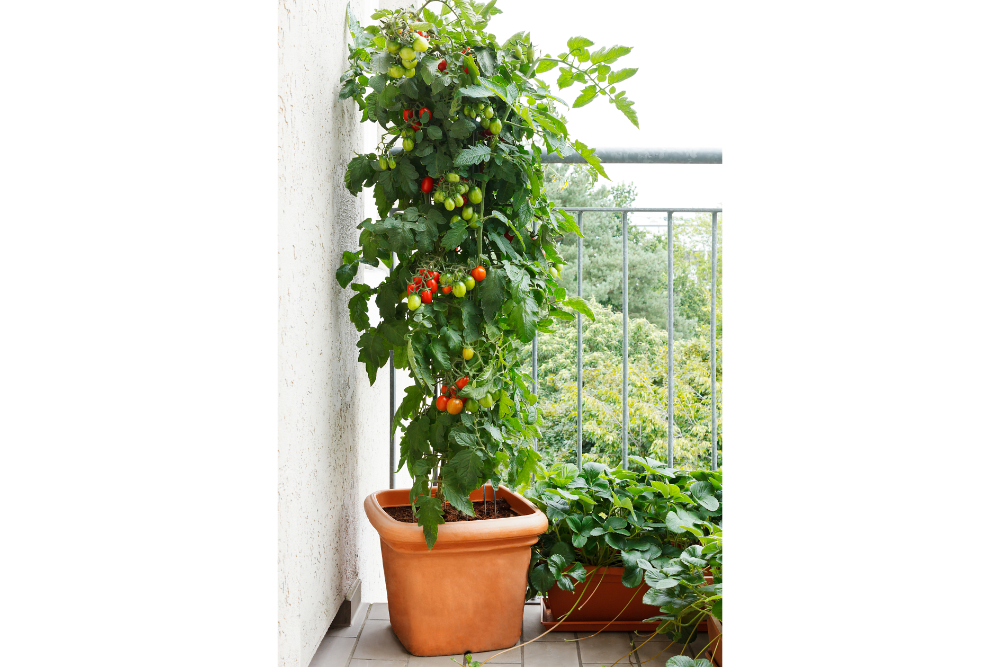
Bringing Herbs Closer to Children
Herbs can also be planted with children. This turns every meal into something special when the small fragrant leaves can be picked fresh for garnishing or seasoning. Parsley, chives or basil are ideal for this. They can also be grown very well in pots on the balcony or on a sunny windowsill. They can also be sown and cultivated by children in Raised Beds or in a Herb Snail in the garden.
Sowing Nasturtium: From Seed to Plant
The nasturtium not only delights children's eyes with its bright orange flowers, the fast-growing and climbing plant also transforms a patio or balcony into an exciting jungle in no time at all. But it not only looks beautiful, it also tastes good: its flowers can add a spicy note to salads or soups. Due to the mustard oils it contains, the climbing plant has been used as a medicinal plant since the Middle Ages. However, as it is very sensitive to the cold, it should only be grown on the windowsill from mid-April and sown or transplanted outdoors in mid-May at the earliest.
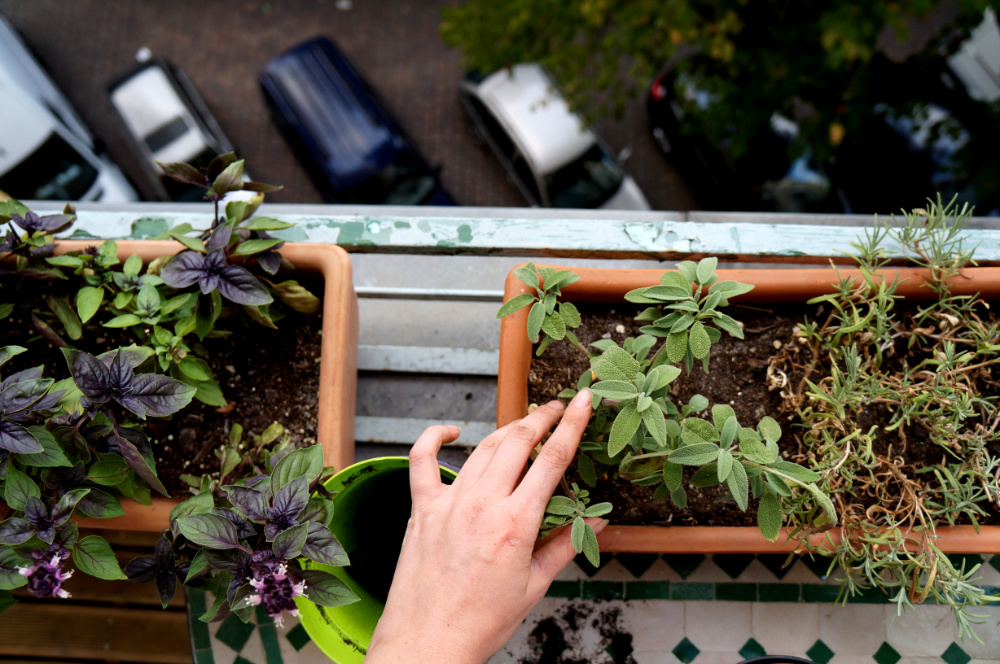

Want to Exchange With Other Gardeners?
To exchange ideas with other gardeners and benefit from their experiences, you can visit our Fryd community. Perhaps someone has already started some projects with kids and can give you some tips.
Join Community HereGardening Ideas for Children: DIY Growing Pots
If you want to teach children about the cycle in nature through gardening, it all starts with sowing. Children can make their own seed pots for this. Along the way, they can learn that various things that would otherwise end up in the bin still have a useful purpose. Planting or growing containers for young plants are suitable:
- egg cartons
- empty toilet paper rolls, cut in half and placed in a bowl
- empty cartons of milk or juice, with one long side cut out with a sharp knife.
Filled with soil, they are perfect as seed pots. To avoid confusion later on, the seed pots can be labeled with the names of the vegetables that have been sown in them. Alternatively, the vegetables can also be painted on self-made labels.
Projects With Children Without a Garden or Balcony
Growing Microgreens and Sprouts
Microgreens follow the same principle as cress. These are seedlings of plants that are harvested and eaten just a few days after germination. Due to the short cultivation time, they are particularly suitable for experimenting with children, as they promise an extremely quick sense of achievement. Different varieties are available, such as mustard, radish or clover, but peas and sunflowers are also suitable for growing as microgreens. The seeds are sown quite densely on a bed of potting compost or a damp kitchen towel. As many varieties require darkness to germinate, the seeds should be covered with a dark lid for the first few days. When the first sprouts are visible, the lid should be removed and the seeds can be harvested as soon as the cotyledons are fully developed. Microgreens can be used to garnish salads and soups or - for the full taste experience - simply eaten on a sandwich.
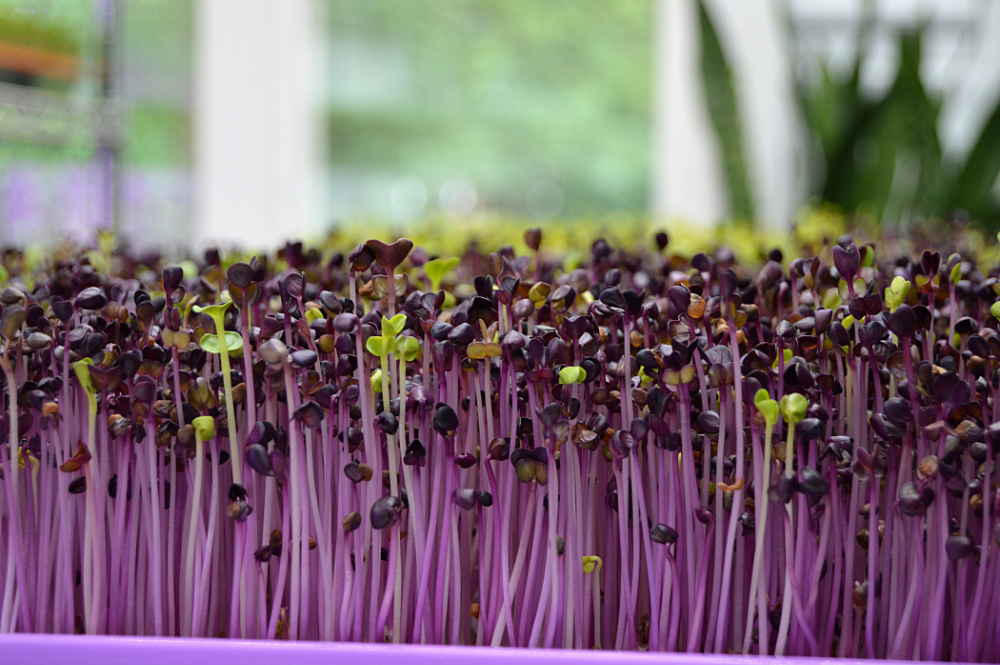
Making Cress Hedgehogs: Instructions
But there are also other exciting planting projects that can be realized without a garden or balcony. A cress hedgehog, for example, is perfect for the windowsill. The shapes for this can either be bought or made yourself. Discarded stockings are ideal for this, but other socks can also be used. The socks are filled with soil and knotted tightly. The eyes and nose can be made by sewing on buttons. The seeds are then placed on the "back" of the filled sock. The whole thing can now be placed on a plate on the windowsill and kept well moist. After a few days, the green "spines" will sprout.
Regrowing Vegetables - Turning Old Into New
Another quick project that is ideal for curious children is the so-called "regrowing" of plant residues. Vegetable scraps with roots are suitable for this. Some plants are able to sprout and grow again from the stalk.
Spring Onions and Leek
Regrowing is easiest with spring onions. Simply cut off the top three centimetres of the root end and place in a glass of water on a bright windowsill. After just one day, the greenery will start to grow back. The bulbs do not even need to be planted in a pot, tap water is sufficient for 1-2 more harvests. Incidentally, this method also works with leeks.
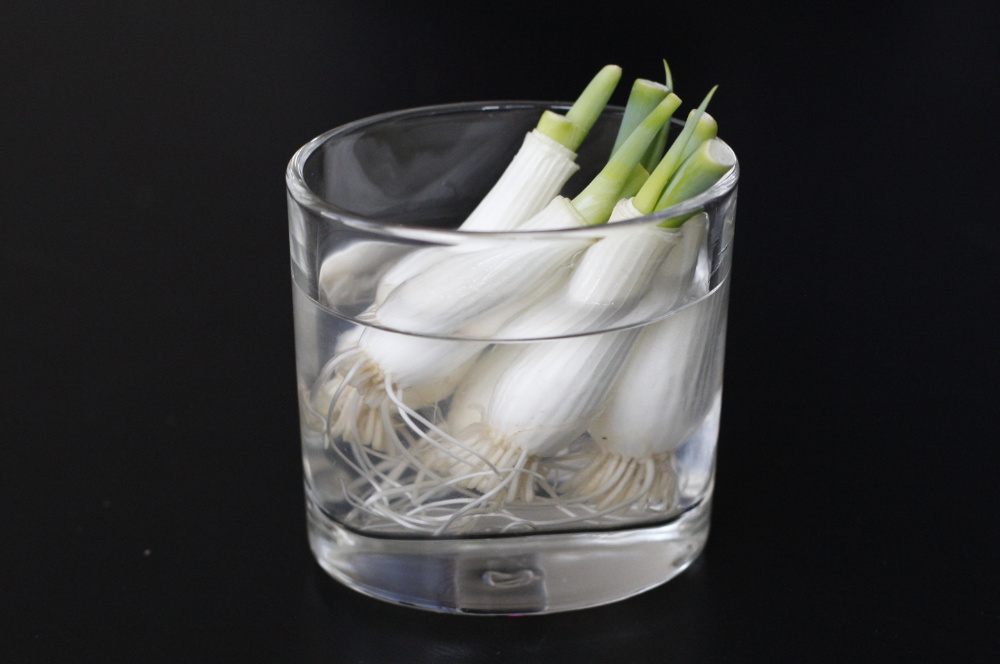
Regrowing With Carrots: How It Works
Bundt carrots are also suitable for botanical experiments in the home. To do this, remove the green tops down to a 1 - 2 cm/0.4 - 0.8 in long stalk. The carrots can be used for cooking except for a short stump. Place the stumps with the root tips in a bowl of water. After a few days, new roots and cabbage will form. Then the time has come to plant out the sprouting carrots again, for example in a flower box or pot. Please note: you will not get nice straight carrots that can be harvested.
Regrowing With Celery
To regrow celery, the stalk should ideally be at least 4 cm/1.6 in long. This is also placed in a small bowl with a little water. It is important that there is not too much water in the bowl. The bottom should only just be covered. After about 5 days, new leaves will begin to form on the stalk. This can now be planted in soil to grow again. This also works with romaine lettuce or cabbage.
Making Seed Bombs Yourself With Children
Seed bombs can be made with seeds from flowers such as marigolds or knapweeds or herbs such as basil or vegetables such as radishes. You will need:
- 200g/7 fl. oz. potting soil
- 200g/7 fl. oz. potting soil
- 3 packets of seeds (flower mixes, flower seeds, herbs, ...)
- some water
All the "ingredients" are kneaded together and balls are rolled out of the mixture. The seed bombs are ready. The round balls are also a great activity for children's birthday parties. These seed bombs can be thrown out on the way, but also in your own garden. It's exciting for young and old to see how the plants develop in the places where they are thrown out.
We hope these little tips can make your time together a little more colorful and varied. If you have any questions or comments, please write to us at magazin@fryd.app.
Want to get helpful gardening tips all year round and plan your own beds in the best possible way? Then register here or download the Fryd app for Android or iOS.
Fryd - Your digital bed planner
Isabell
Current Topics in the Community
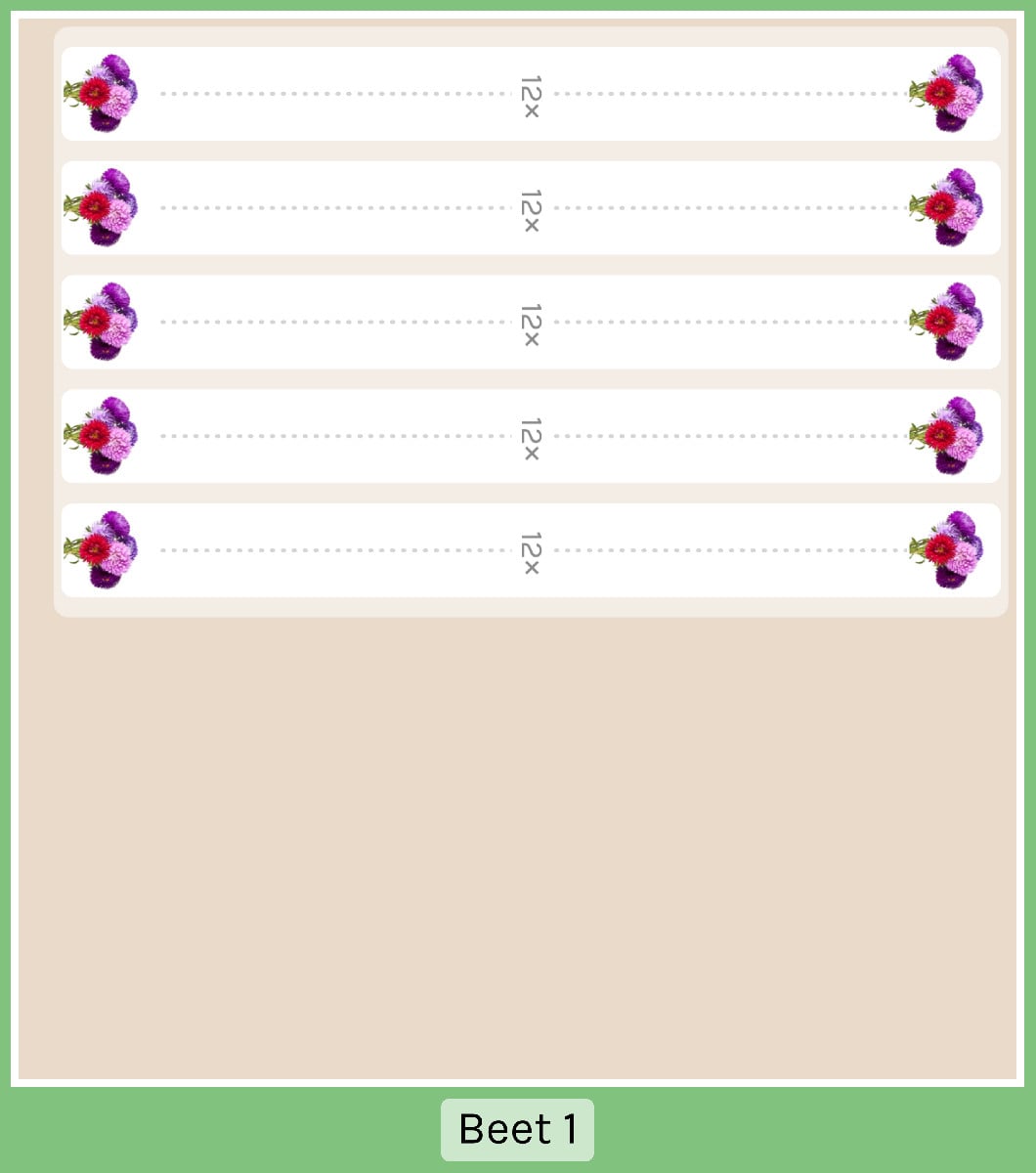

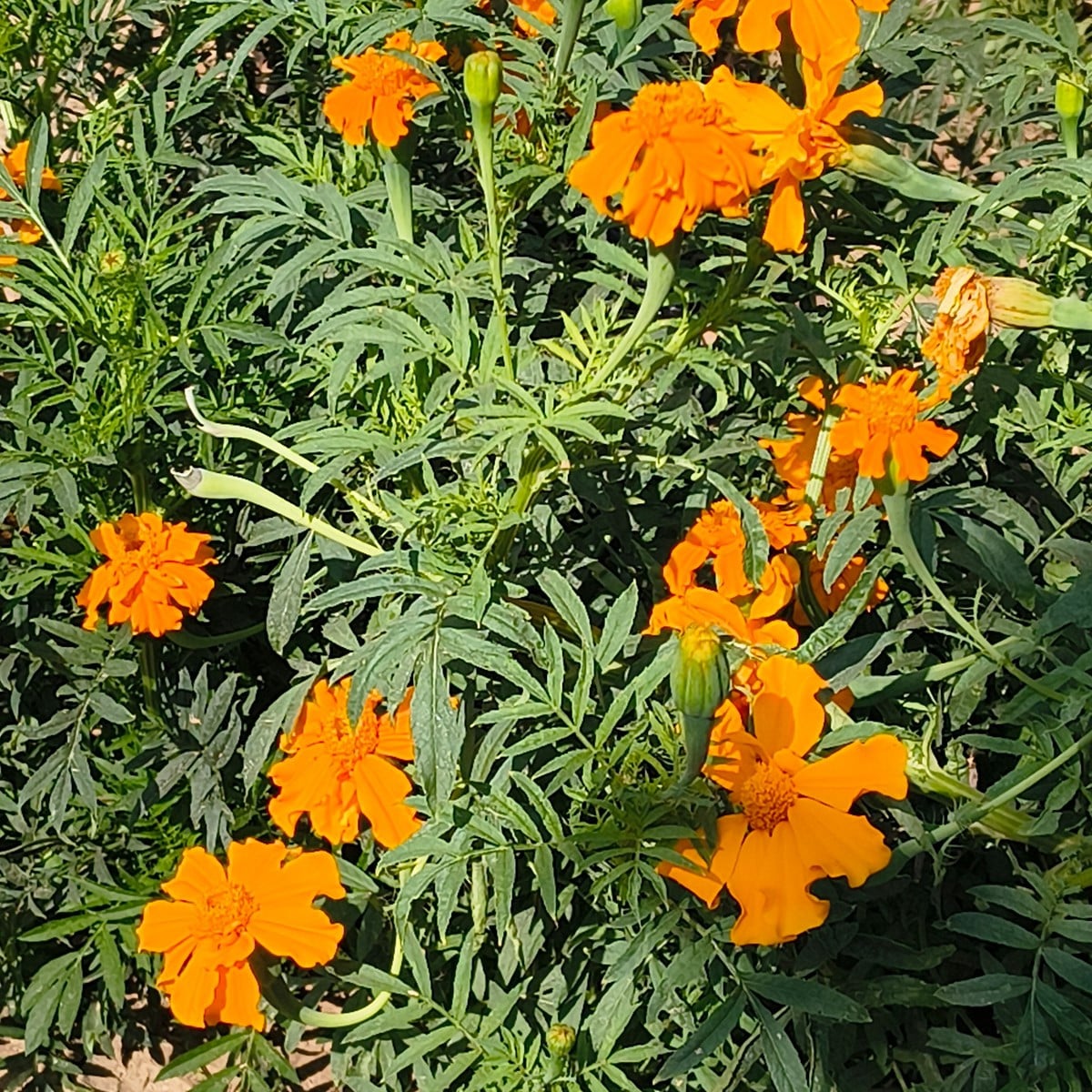
Liked 1 times
@Ufrydpaid_01
Popular Articles

Companion Plants for Carrots: What (Not) to Plant With Carrots

Companion Plants for Celery : What (Not) to Plant With Celery?

Strawberry Types: List of Best Strawberry Varieties

Companion Planting With Strawberries: Companion Plants and Planting Plan

Basil Varieties & Types at a Glance

What to Plant With Cabbage: Good and Bad Companion Plants

Fertilizing Strawberries: Home Remedies & Natural Fertilizers at a Glance

Growing Sweet Potatoes: Tips on Cultivation & Companion Plants

Companion Plants for Kitchen Herbs: Chives, Parsley & Co

What Herbs Can Be Planted Together?
FAQ
Which vegetables grow quickly?
Vegetable plants such as radishes, lettuce, sweet peas and nasturtiums grow quickly and are ideal for impatient children. They can be harvested after one to two months.
What can you plant with children?
With children, you can sow and plant easy-to-grow plants such as cress, sunflowers, peas, beans, various herbs and cocktail tomatoes. Planting seed bombs is also a great alternative for children.
What kind of projects can you do with children without a garden or balcony?
For projects without a garden or balcony, you can sow either microgreens or cress. A great project for children is the cress hedgehog. Alternatively, there is regrowing, e.g. of leeks or carrots. Making seed bombs with the children is also always a nice change.
How can you make your own seed bombs?
To make your own seed bombs, mix clay powder, compost and seeds. Use a little water to form small balls and leave them to dry before throwing them out.
Which vegetables are suitable for regrowing?
Vegetables such as leeks, celery, lettuce and spring onions are suitable for regrowing, as they can sprout again from their root remnants.